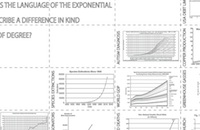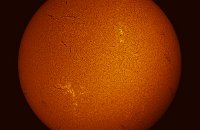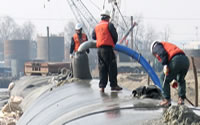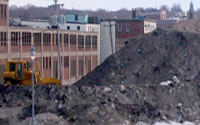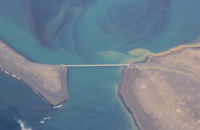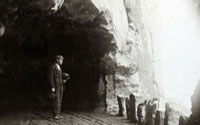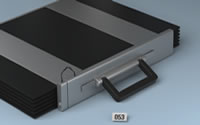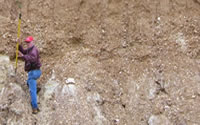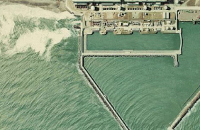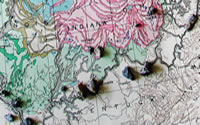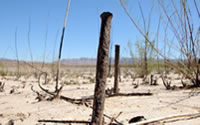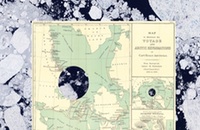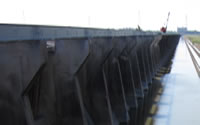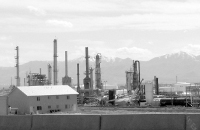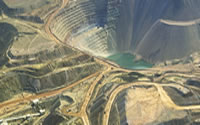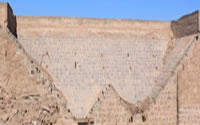Imagining the Geologic
Janike Kampevold Larsen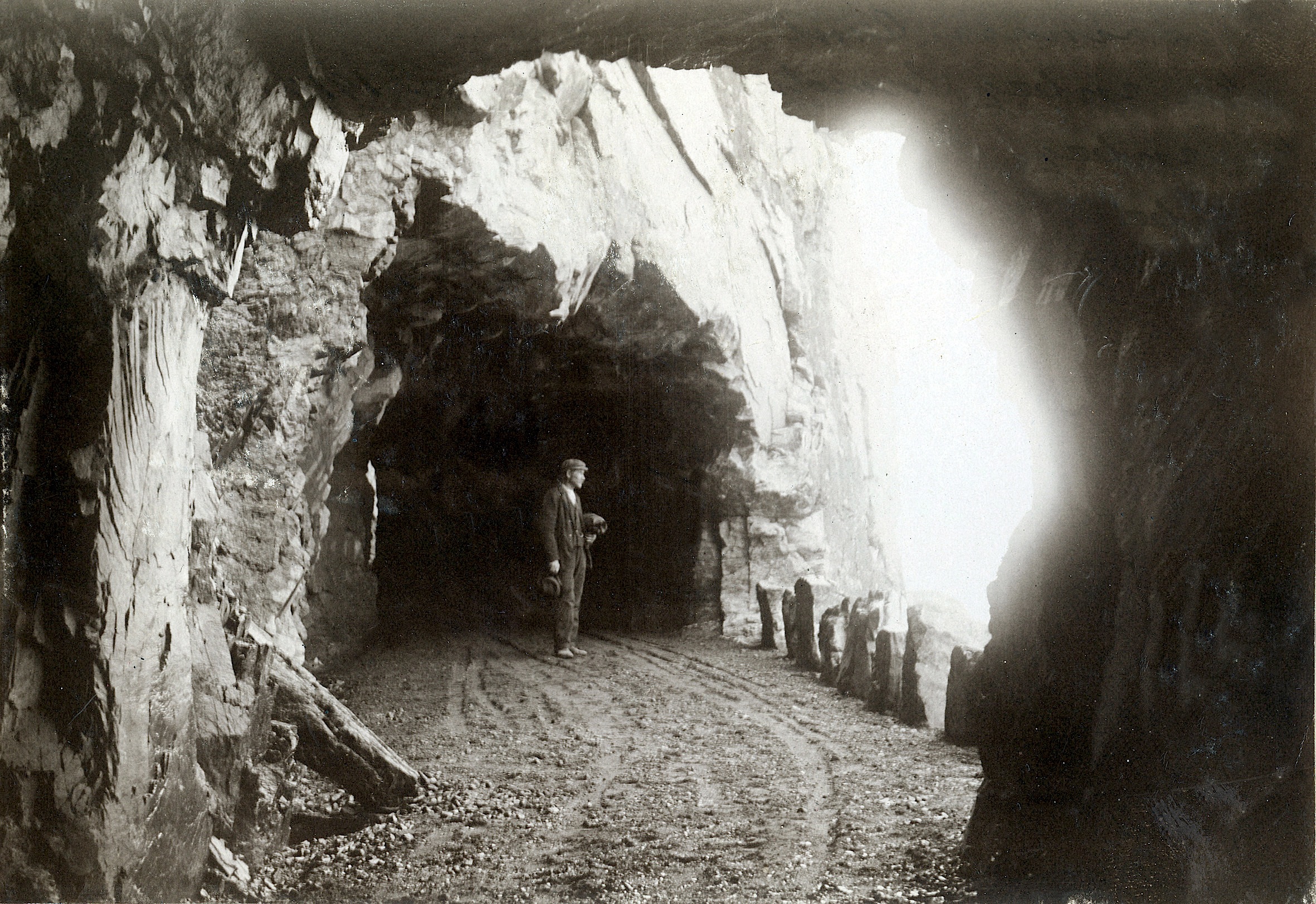
Image from Road Director Hans H. Krag’s foto album, 1900; courtesy of the Norwegian Road Museum
In The Tertiary History of the Grand Cañon District (1882), US surveyor Clarence E. Dutton writes: “Great innovations, whether in art, literature, in science or in nature, seldom take the world by storm. They must be understood before they can be estimated, and must be cultivated before they can be understood.”[1]
Dutton himself cultivates his experience of the Grand Canyon by making imagination a tool for fascination. He describes the impression of geologic forces upon himself. In order to explain how he perceives the magnificence of the rock faces he sets them in motion to encourage an understanding both of their making and their aesthetic impression: “the Vermillion Cliffs send off buttes,” “the entablature […] breaks into lofty truncated towers," “the towers of Short Creek burst into view” (53, 54). The vocabulary is architectural. The canyon is abundant with columns, buttes, terraces, promontories, bays, towers, churches, temples, theaters, and avenues: “As we move outwards towards the center of the grand avenue the immensity and beautiful proportions of the walls develop” (87).
The impression of movement seems first and foremost to come from the geologic masses’ own agency. The canyon is a plastic scenario of ripping forces and flowing substances: “The […] escarpments stretch their courses in every direction, here fronting towards us, there averted; now receding behind a nearer mass, and again emerging from an unseen alcove” (60). When Dutton describes a wall as ”stretching athwart the line of vision” (86), he describes not the agency of the phenomenological gaze, but a geology that blocks that gaze’s access. Dutton’s animated perception displays the canyon as an active agent, as something showing itself to him. The canyon stages an unprecedented meeting between man and geologic forces and presence at unimaginable scales. Dutton is being confronted with earth’s time.
Tertiary History of the Grand Cañon District fully demonstrates how knowledge and recognition of geological processes may enrich the experience of a particular tract of land, in this case the “veritable wonderland” (36) that is the Grand Canyon, much like Eric W. Sanderson’s Mannahatta (2009) and smudge studio’s Geologic City (2011) adds to New York, activating an imagining of its past state and human making, and not the least, activating an imagining of its future.[2]
By “leaps of the mind” and “slight effort[s] of the imagination” Dutton cultivates his sights in order to render them conceivable. As part of a detailed procedure for visualizing a reconstruction of the Grand Canyon’s smooth Carboniferous platform, Dutton performs an imaginary depression of the freshwater beds of Eocene age, which are now located between 10,000 and 11,000 feet above sea level: “To find their position at the beginning of Tertiary time we must in imagination depress them that amount” (71). Imagination also carries Dutton to unforeseen terrains: “Could the imagination blanch those colors, it might compare them with vast icebergs, rent from the front of a glacier and floating majestically out to sea, only here it is the parent mass that recedes, melting away through the ages, while its offspring stands still” (54).
Robert Smithson performs a very similar exercise of setting geologic material in motion by help of imagination in his essay on Frederick Law Olmsted and Central Park:
“Imagine yourself in Central Park one million years ago. You would be standing on a vast ice sheet, a 4,000-mile glacial wall, as much as 2,000 feet thick. Alone on the vast glacier, you would not sense its slow crushing, scraping, ripping movement as it advanced south leaving great masses of rock debris in its wake. Under the frozen depths, where the carousel now stands, you would not notice the effect on the bedrock as the glacier dragged itself along.”[3]
The "slight effort of the imagination" employed by Dutton and Smithson, helps illuminate that almost inexplicable fascination we feel when looking at exposures of geologic stratification revealed by present day engineering and construction--such as road cuts and surface mines. One could say that fascination with elemental and geologic presence in our environment is a fascination in the face of what is not us, what is not human, and which has its own agency. For French philosopher Jean-Luc Nancy, it is a fascination with something that is not landscape.
To Nancy, that which escapes the category of landscape also escapes us. The ground of the landscape, its base materiality, is always mediated by landscape as a cultural construct. We have no access to the ground as unmediated. To explain this, Nancy compares the relationship between “landscape” and “land,” to how the image stands in a relation to that which it is an image of. The image is an image of the world, of the world it is made in and arises from. Once pictured however, this world, or ground if you like, disappears in the image. This is simpler than it sounds: the image lets go of what it portrays by portraying it! The image is something else, it has changed what it saw and it occupies place with the same authority.
Nancy further launches the idea of country (pays) as something that is not a politically, nationally, culturally and socially formed imaginary construct. It is a corner of land (of the earth) that one might belong to. Landscape (as image), on the other hand, is something that distances us from the country. As Christianity took its hold on landscape and substituted the noisy pagan gods living in the landscape with the ephemeral true God, it expelled all presence from it. The modern era provides no immediate relation to land, no unmediated reciprocity, compared to what the pagan gods offered by being a live part of the landscape. And this establishes a distance between the land and the culturally produced onlooker. To the extent that we are wrapped up in a notion of landscapes as visual and perspectivized scenarios, we are missing a sense of the world as an abundance of material without meaning, except for the differences that exist between shapes and forms, between tree and rock. Nancy opens up the possibility for a sense of the empty, meaningless landscape that the pagan gods surrendered to the Christian God, of land as nothing more or less than mass and presence. When the distance of culturally produced meanings and perspectives is absent, we sense the ground in its desolateness, its lack of meaning and of gods: “there is no presence, there is no access to an ‘elsewhere’ that is not itself ‘here.’”[4]
The American sublime, as suggested by David E. Nye, lies in novelty, and corresponds with Dutton’s impression of sublimity while facing the Grand Canyon’s “forms so new to the culture of civilized races” (90). For Dutton, the sublime lies exactly in encountering forms not yet part of the human categories for understanding: “In this far-off desert are forms which surprise us by their unaccustomed character. We find at first no place for them in the range of our conventional notions” (90-91).
Today, it is through and by technological and mechanical work that the earth is revealed. But the novelty for us, now, does not consist in the mechanized revelation of its unseen forms. It consists in the formlessness of the matter revealed, as well as in the deep time that it prompts us to imagine. How might we, expanding on Dutton’s imaginary animation of geologic form and, by way of Smithson's imaginary animation of Central Park, move on to a conception of the "geologic now” as a new mode of awareness?
At the Norwegian Road Museum lies an old photo album. It was found in the office of the famous road director Hans H. Krag, the Norwegian equivalent to the obsessed “master builder” of New York, Robert Moses, only lacking the latter’s more outrageous sides. Krag was responsible for most of the Norwegian highways built 1880-1903 in which time span the gross part of the country’s mountain pass roads were built. His album of photographs shows planned roads, indicated by a red line drawn straight across a vertical slab running into a fjord, newly finished roads, and exotic road engineering forms, like half tunnels and glacial tunnels. The photos do of course most of all display the fascination with engineering possibilities, the marvel of human made forms in a nature not easily conquered. They also however testify to the marvel of geology released in the road building practices of the late 19th century.
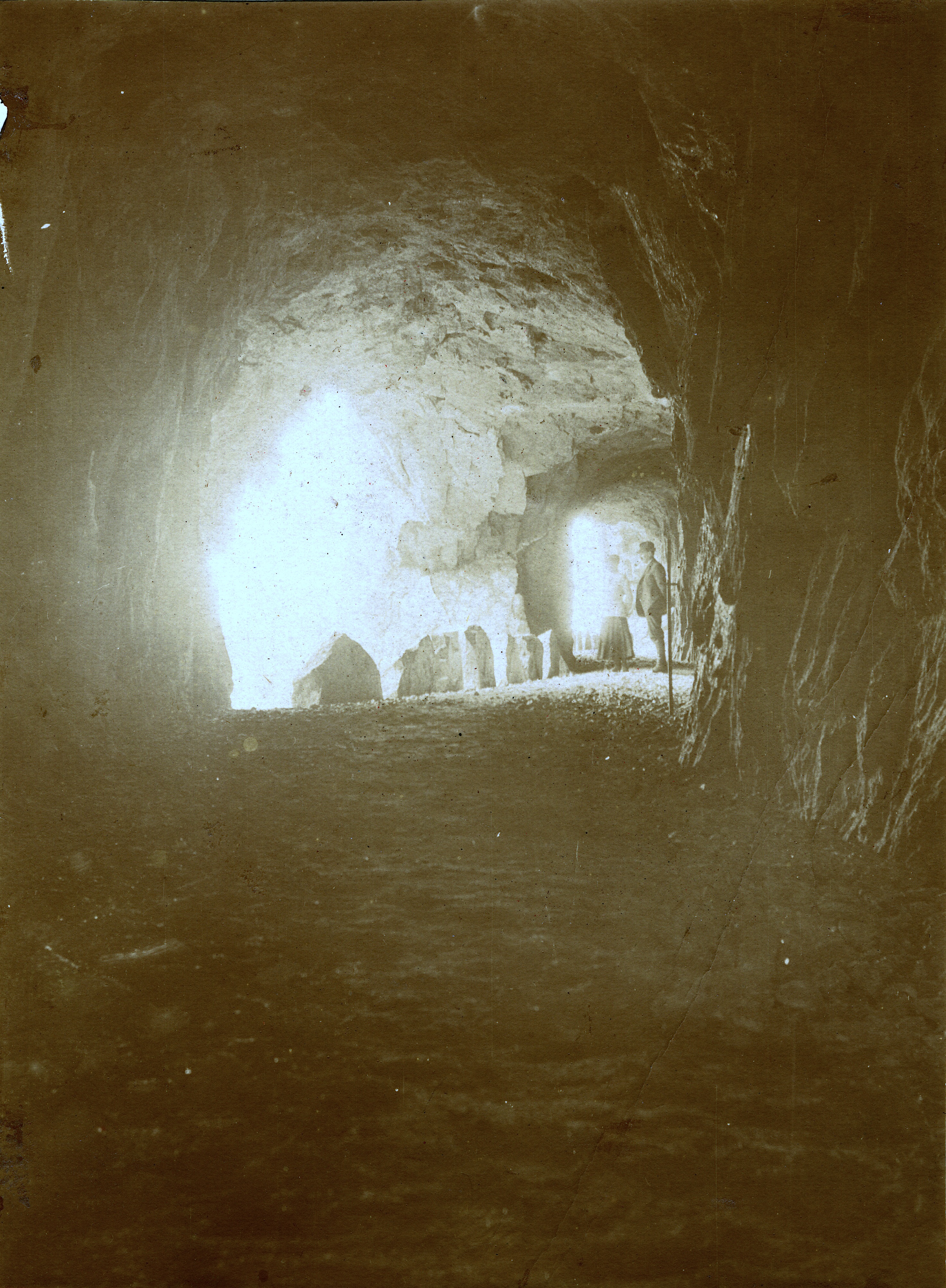
Image from Road Director Hans H. Krag’s foto album, 1900; courtesy of the Norwegian Road Museum
Two photos stand out as something more than documentation of conquest, and they are astonishingly similar. Both are shot from inside of newly blasted tunnels, roads not finished. In both photos there are figures standing inside the tunnel gazing out of holes through which light flows in. The figures have an air of contemplation. These are not just construction scenarios. Rather they display an artistic wonder in the face of a new landscape or landscape situation, that of looking at the landscape from inside of its matter. The road construction site has formed a space in which nature seeps in and is displayed: an inverted museum.
And still the photos show an attention to the geologic presence of the inside of the mountain. The unknown photographer’s sense for material form, light effects and scale recalls romantic painting from a century before, like those of Caspar Wolff’s ”Eine Jura-Höhle” from 1773, or Joseph Wright of Derby’s ”Cavern in the Gulf of Salerno,” 1774, or his “A Cavern, Morning” from the same year.
back to top ↑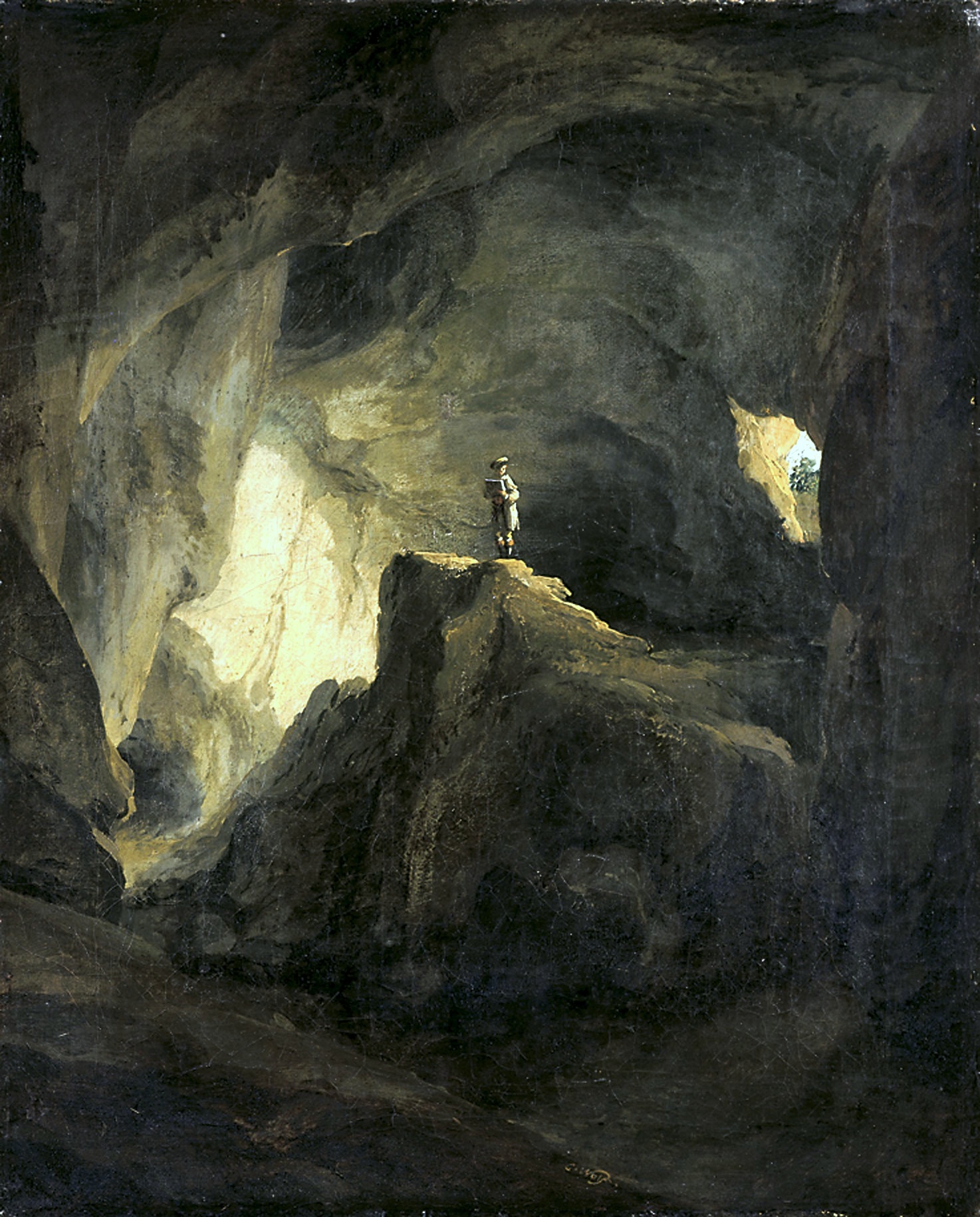
Road cuttings are human made structures that allow us to co exist with a legible trace of deep time as rock faces, stratification, old riverbanks and just plain dirt is shoveled up and thus displayed. However, they also project into the deep future, Steven Ian Dutch claims in “Geosphere, The Earth has a Future.” Structures likely to exist in a million years do not contain steel (as it would corrode). Instead, they include “open-pit mines, earth-fill flank dams, and large landfills.” He also adds “large highway and canal cuts.”[5]
To enjoy road cuts however, one must not only have a sense of geologic presence, but for the ordinary, for repetition of views, and not the least for that which we pass at great speeds.
Norwegian artists Ingrid Book & Carina Hedén displayed their series Produced Landscapes at Oslo School of Architecture and Design in 2009. For their exploration of roadside landscapes they have chosen the least spectacular stretch of motorway in Scandinavia, the E6 between Oslo and Gothenburg. The road cuts through a semi-industrial cultural landscape broken by shorter stretches of grove--and cuttings. The rock faces are marked by industrial process; the slabs are brutally cracked and bear marks of drilling and blasting. Book & Hedén’s 30 photographs catch the generic landscape of the motorway cuttings, the typicality of the Scandinavian gneiss and granites. However, as always in series based on typology, this series manages to display the untypical of each cutting: colors, geologic composition, and rock qualities vary in the tableaux revealed by the photographer. The project thus achieves some of the same effects as some of the typology studies in Gerhard Richter’s Atlas.[6] His series of slightly shifted views of gardens, rubble, shrubs, and mountain views unfold the immense variety produced by a slight shift of perspective, and thus reflect a deep desire to say something of how ordinary, often messy, landscapes affect us, and how we are drawn to them. Book & Hedén ask the same question: why are we attracted to haphazardly blasted roads cuts?
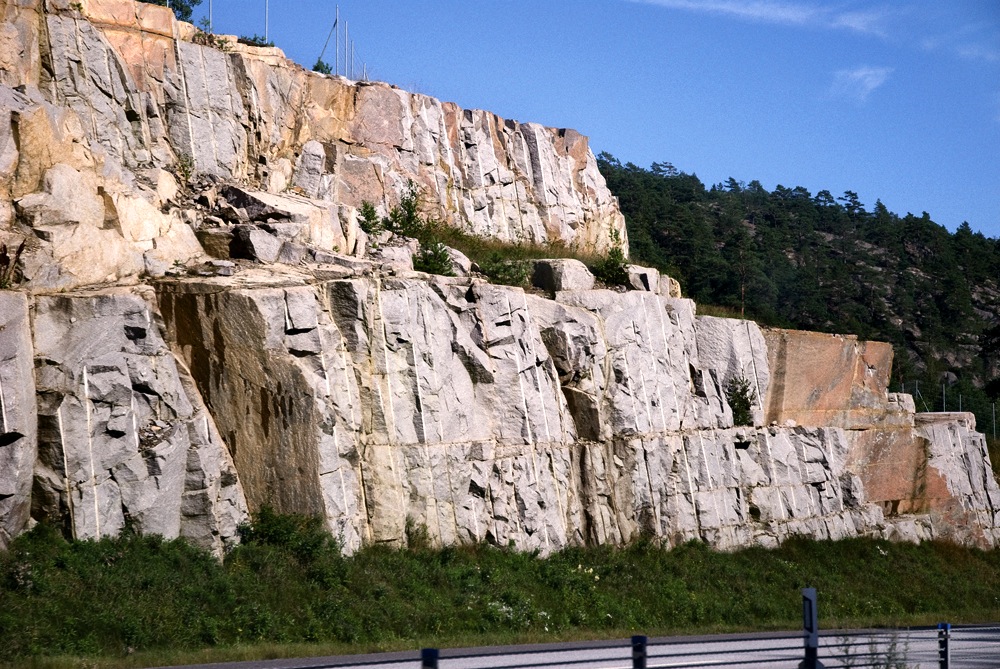
Reproduction courtesy of the artists.
The photographic closeness to the rocks produces surprising effects as one projects one’s imagination onto their materiality. One of the cuttings looks soft, like draped velvet flowing down the slope. Another one looks like a cut-out part of El Capitan, wide red slabs of sandy granite, yet another a roadside “mesa” displayed to northern hemispheres. Still others are framed by dirt and stone masses. The decorative grasses so typical of roadsides in Europe have not yet been planted and the sites thus retain a construction quality. The ground is exposed in a more raw way and thereby the sites escape the leveled character that Uvedale Price shunned as it concealed ”the ground itself.”[7]
The exposed rock of cuttings like these, or by the one on the Canadian Shield shot by Jamie Kruse, exhibit to us a time that we have no access to: the slow time of geology. The temporality of the rock has been transgressed in and by the blasting of it. As happens in the Grand Canyon, the rock becomes legible as its layers, patterns, and composition is revealed in the cutting. The cut, or incision in the rock, which we will not see clearly at speeds from the car, but all the more clearer in the camera’s still frame, defies the extreme slowness and gravity of the rock. Thus the road cut displays an encounter between the slow geological process and a rapid perception of the material--one could say between the 19th century’s fascination for geology as science and technique and our time’s dependency on high speeds. They allow us access to a temporality and a materiality that our common speeds tear us away from. Ironically it is our infrastructure that allows us both.
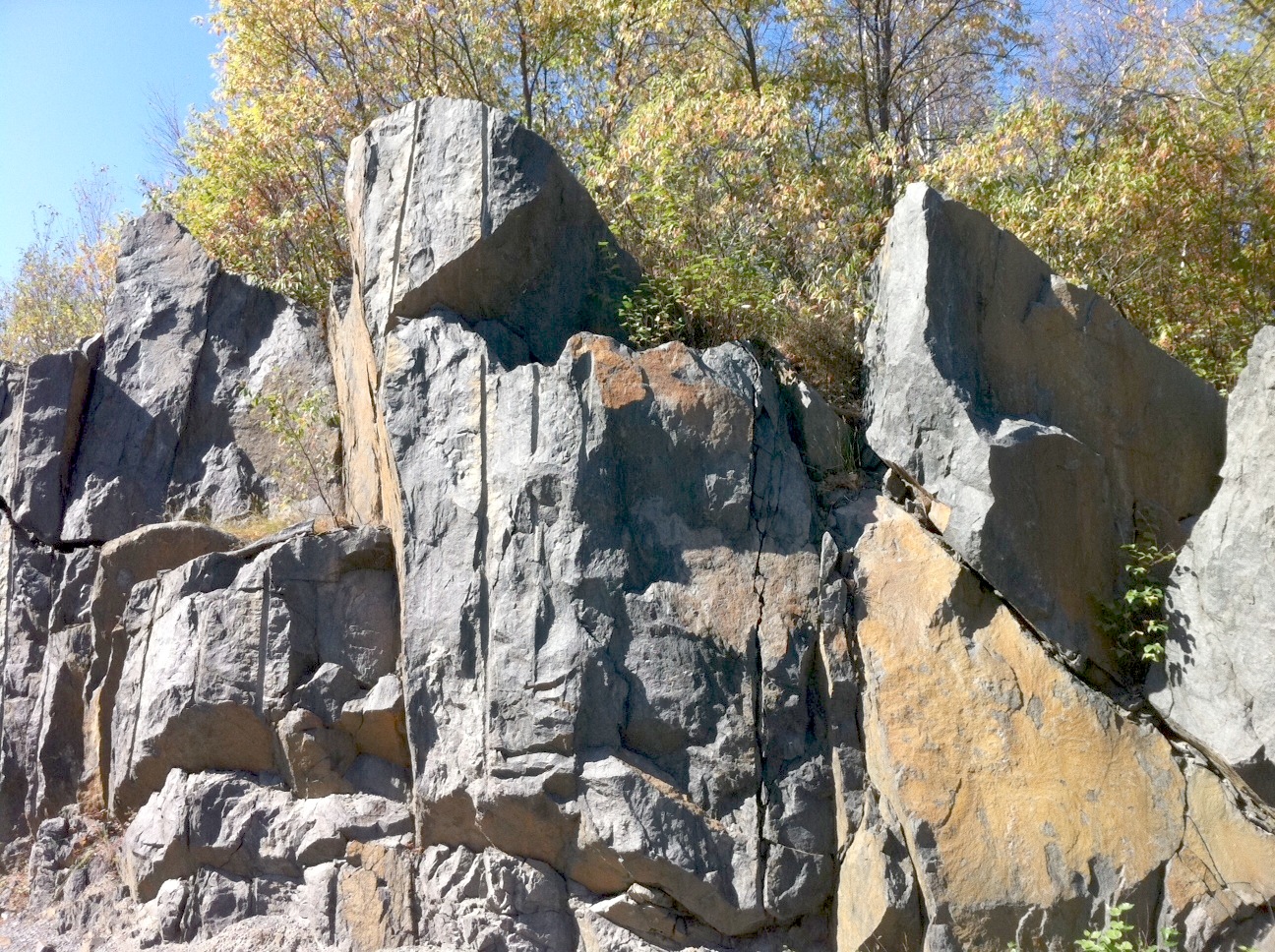
Image courtesy Jamie Kruse.
In the post Digging Vermont. What lies beneath the green mountain state, The Center for Land Use Interpretation observes the mountains of slate pieces formed by excavation residue from mines in the territories of Vermont. They recognize something that we might call an implicit fascination: “[R]emarkably few seem to mind how it looks.” In conclusion to this post CLUI proceeds to deliver what is, for them, a rare statement of aesthetic evaluation:
Maybe we will decide, though, that terrestrial excavation’s honest depiction of our collective consumption can be alluring, or even beautiful, like the picturesque old quarries that litter the state already. Maybe one day the extraction of the mineral resources of the Green Mountain State will be more highly appreciated, as unlike ski condos, it operates, for the most part, below grade, in the gray area under the green.[8]
Here, in one of quite few places where CLUI actually offers an aesthetic evaluation of the many landscape typologies they document, they give expression to the need for a process of habituation not altogether different from Clarence E. Dutton’s credo. The cultivation of contemporary landscape typologies like those produced by ground activities of Vermont, contributes to develop and uncover strategies to re-conceptualize our landscape. They also display the necessity of imagination in articulating the significance of contemporary landscapes, as does Book & Hedén’s images. This does not, and maybe should not imply investing them with meaning, or even assigning them specific uses. It could mean simply recognizing their agency to produce an effect in us by their mere presence.
back to top ↑Notes
- Clarence E. Dutton, Tertiary History of the Grand Cañon District (Tucson: The University of Arizona Press, 2001), 142. First published by the U.S. Geographical Survey (Washington, DC: 1882). Hereafter referred to by page number parenthetically throughout essay.↑
- In Mannahatta: A Natural History of New York City, Eric W. Sanderson and his team of scientists reconstruct Manhattan of 1609 and thus add a layer to present day geography and the experience of the city. In Geologic City, smudge studio brings our attention to urban “events” featuring geologic matter and significance, brownstown buildings, scaffolding, Manhattanhenge and the city’s closeness to the “canyon” in its waters. ↑
- Robert Smithson, “Frederick Law Olmsted and the Dialectic Landscape (1973)," in Robert Smithson, The Collected Writings, ed. Jack Flam (Berkeley: University of California Press, 1996), 157.↑
- Jean-Luc Nancy, The Ground of the Image, trans. Jeff Fort, (New York: Fordham University Press, 2005), 59. ↑
- Steven Ian Dutch, "The Earth has a Future," Geosphere 2.3 (2006): 113-124; doi:10.1130/GES00012.1↑
- Specifically in the series’ Hahnwald 2006 and Sils Maria 2006; see Gerhard Richter, Atlas (Köln: Verlag der Buchhandlung Walther König, 2006), 757-783. ↑
- Uvedale Price, Essays on the Picturesque, As Compared with the Sublime and the Beautiful: And, On the Use of Studying Pictures, for the Purpose of Improving Real Landscape (London: J. Mawman, 1810). ↑
- CLUI, “Digging Vermont: What Lies Beneath the Green Mountain State," The Lay of the Land Newsletter, Winter 2011, http://www.clui.org/lotl/v34/digging_vermont.html ↑
